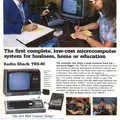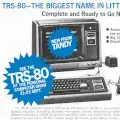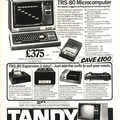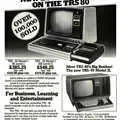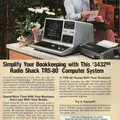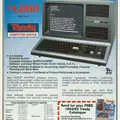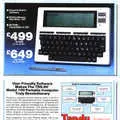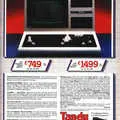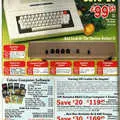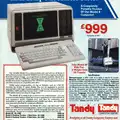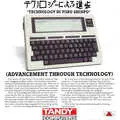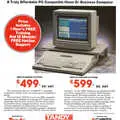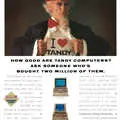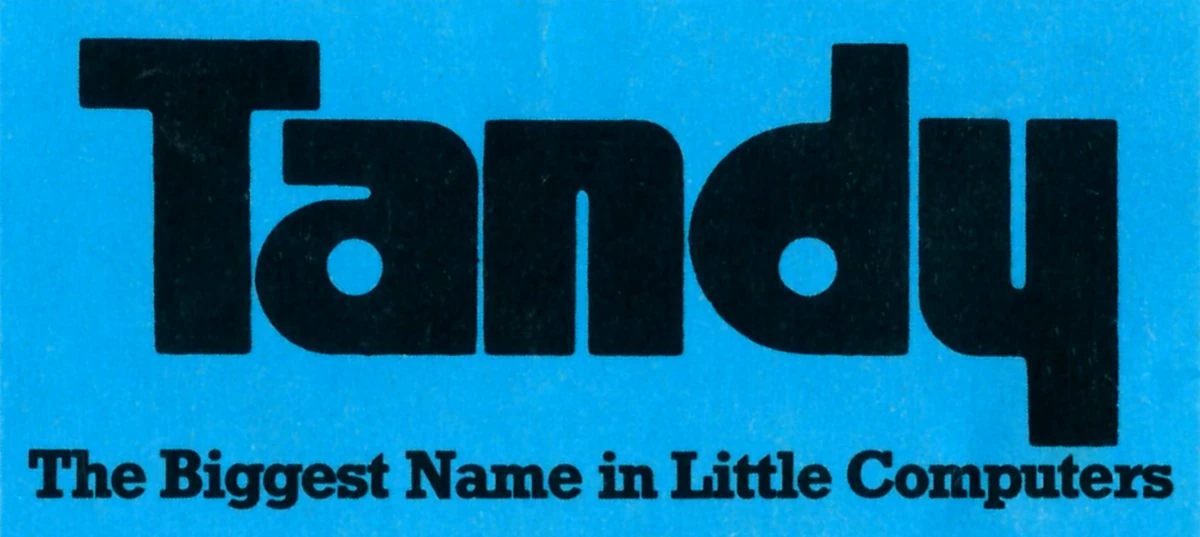
Tandy/Radio Shack Advert - April 1987
From Practical Computing
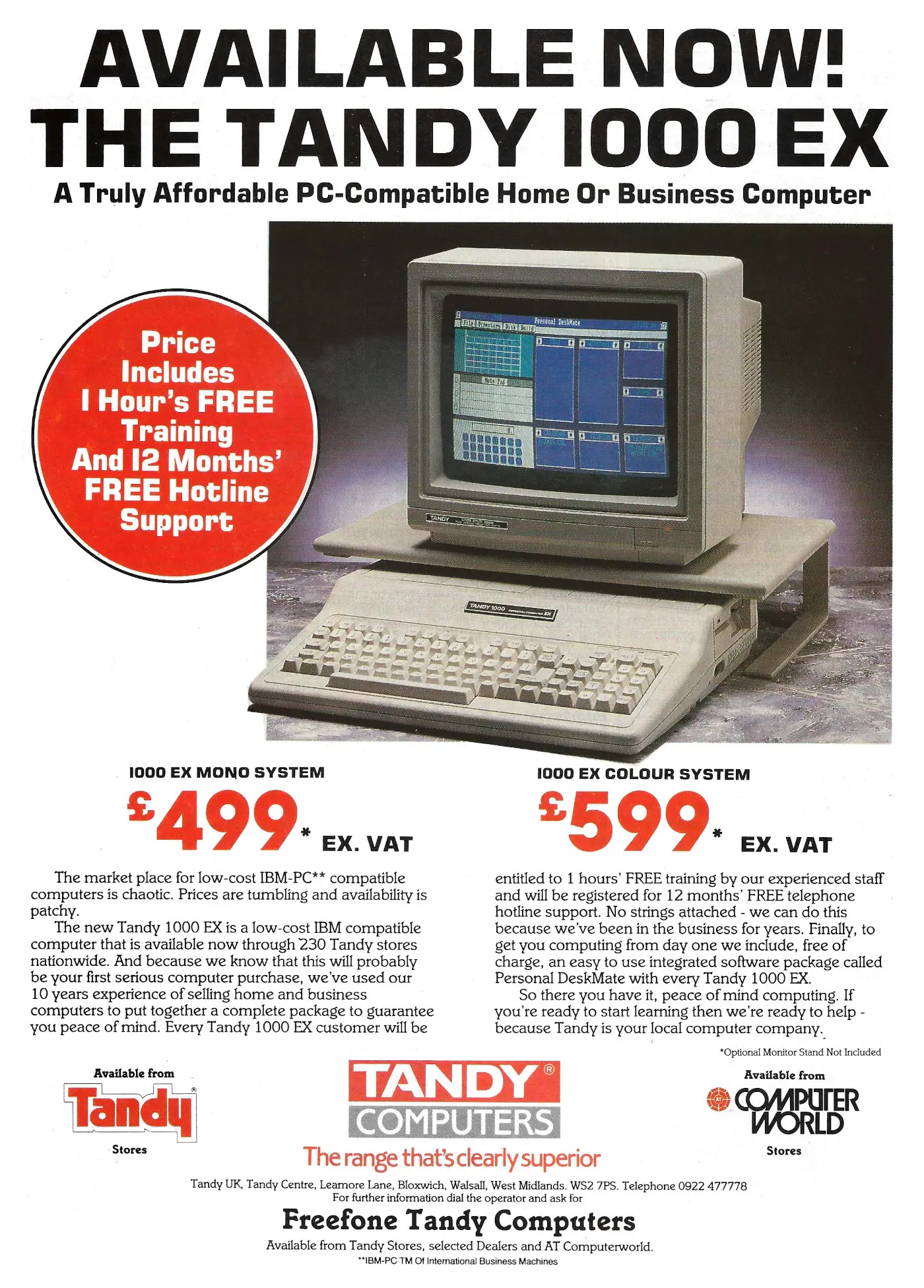
Available now! The Tandy 1000EX
Pitched as a competitor to IBM's ultimately-doomed PC Jr., Tandy's 1000 EX was a version of its Tandy 1000 IBM-compatible PC, with everything built into a home-friendly all-in-one unit, a little like Commodore's Amiga.
The EX, and the later HX model, would become Tandy's most popular models in the Tandy 1000 line, thanks to their low prices. The monochrome version retailed for only £499 + VAT, which is about £2,100 in 2025, whilst the colour version was a £100 more.
Both came with one hour's free training and 12 months' telephone support, which was part of Tandy's drive to give the user "peace of mind" in what it called a chaotic low-cost market.
As John Anderson wrote in December 1984's issue of Creative Computing of the Tandy 1000:
"The Tandy 1000, which should be available at your local Radio Shack as you read this, is the machine IBM was too inept, incapable, or afraid to manufacture. It is sure to put a whopping dent not only into PCjr sales, but into sales of the PC "senior" as well[1]".
However, Glyn Moody writing in December 1986's Practical Computing about the EX version called it a "palpable miss", concluding:
"It is seriously flawed by its badly-designed keyboard, illegible display and lack of expansion capabilities. Some may find the bundled integrated software attractive, but for business users the Amstrad PC is worth waiting for[2]".
Despite the mixed reviews, the 1000 was successful, largely thanks to Tandy's nationwide chain of Radio Shack shops.
The machine helped Tandy to a 9.5% share of the home computer market in 1986, only just behind IBM's 12%, but way behind Commodore's 31%. At the time, Tandy was estimating that a good half of its IBM compatible machines were going into homes[3].
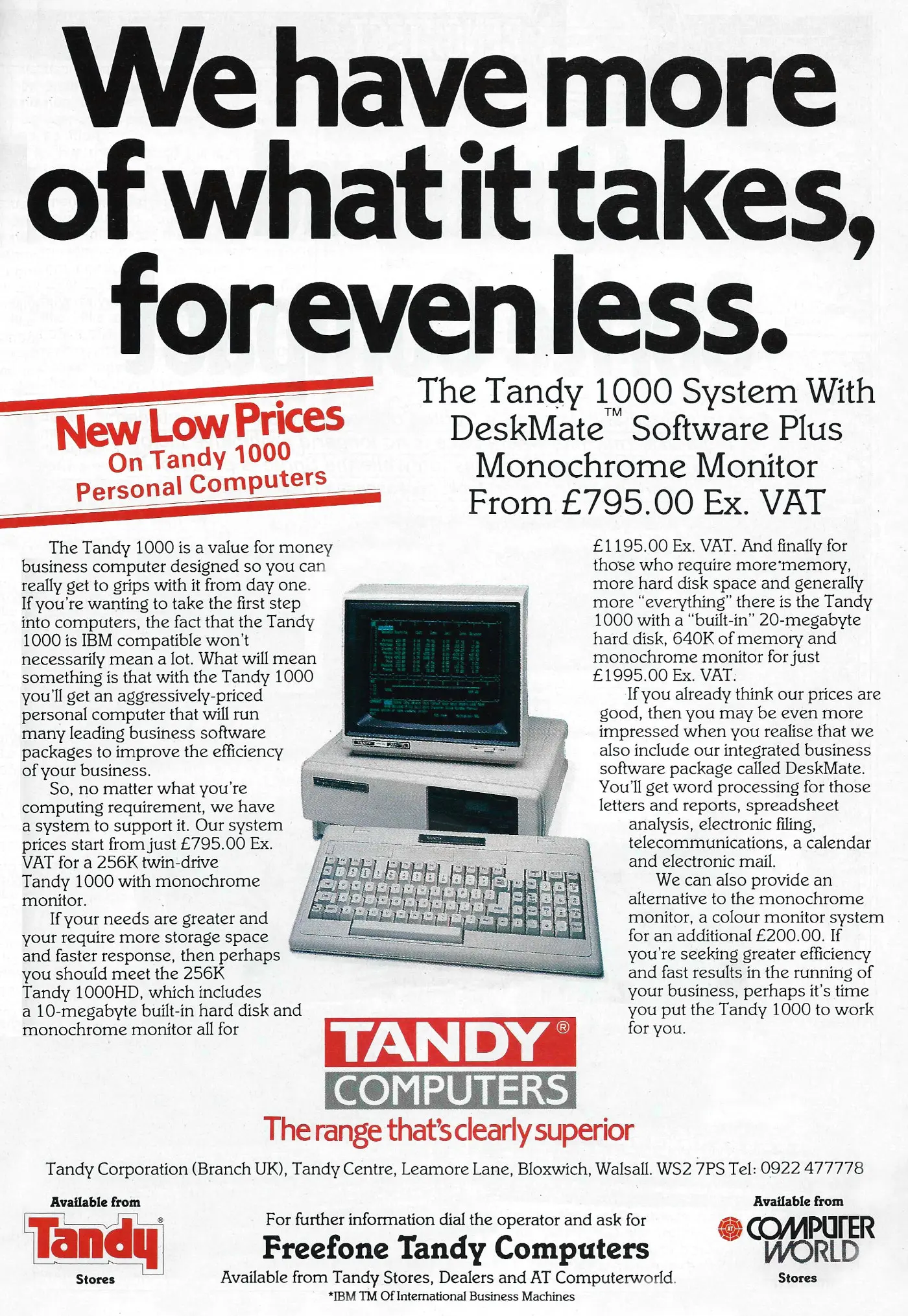
Tandy's original 1000 model. From Personal Computer World, August 1986
However, the fact that IBM had a 12% share of the home market was telling, as it was another indicator that the traditional "home computer" market - like Commodore's 64, or Atari's 400, 800 or 600XL - was nearly over.
Games companies were starting to realise that the market was shifting and so were starting to produce more entertainment software for the IBM format. As Bing Gordon, Electronic Arts' VP of marketing, said:
"We've found that people who buy their computers primarily to do spreadsheets at home are spending 22% of their time playing games, and people who buy their computer as a hobby are spending 22% of their time playing games".
Whilst Gary Carlston of Brøderbund concurred saying of the end of 1986 that:
"This is definitely the MS-DOS Christmas. I think [the MS-DOS market] will be as big as Apple's, which has probably never happened before[4]".
Apple's IIgs, Commodore's Amiga and Atari's ST were all in the same $500-$1000 price range as clones like Tandy's 1000EX, however Apple was considered to be more under threat, as whilst the other two were considered "hobbyist" machines puchased by people who knew what they want, Apple had traditionally been more of the "family" computer.
EA's Gordon concluded:
"The IBM customer tends to be very similar to the Apple customer - a lot more family oriented, a lot more influence of mothers over the purchase, with a real similar kind of ranking of what they think are important applications: productivity first, education second, and entertainment as something they don't really like to talk about. If you look at the numbers, Apple II sales have gone down as clone sales have gone up".
Date created: 16 February 2024
Last updated: 11 December 2024
Hint: use left and right cursor keys to navigate between adverts.
Sources
Text and otherwise-uncredited photos © nosher.net 2025. Dollar/GBP conversions, where used, assume $1.50 to £1. "Now" prices are calculated dynamically using average RPI per year.
